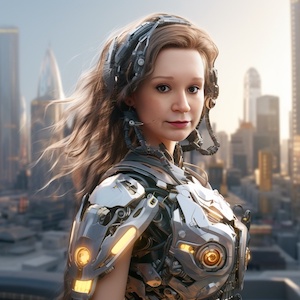I keep getting asked the same question lately: “How did we end up with AI that can write emails, create art, and have conversations?” It happened while I was explaining ChatGPT to my friend last week. She was amazed but also confused about how we got here so fast.
The truth is, it wasn’t fast at all. This journey started decades ago with some pretty wild ideas that seemed impossible at the time.
Since AI is what I write about most on this blog, I maintain a timeline of the major breakthroughs. I covered this in my 2023 post, but things have moved so quickly that it’s time for an update.
The Beginning: Math Meets Biology
Back in 1943, Warren McCulloch and Walter Pitts proposed the first mathematical model of a neuron in McCulloch & Pitts Publish the First Mathematical Model of a Neural Network. They were doing this while most people were focused on World War II.
Here’s what blows my mind about this: they didn’t even have real computers yet. The most advanced machine was the Colossus Mark 1 in Britain—a room-sized code-breaker full of vacuum tubes.
Alan Turing came along in 1950 with The Turing Test. His simple question—if a machine can fool you into thinking it’s human, is it intelligent?—still sparks debate.
The 1956 Dartmouth Workshop officially named the field during Artificial Intelligence Coined at Dartmouth.
1957 brought Frank Rosenblatt’s perceptron, chronicled in Professor’s Perceptron Paved the Way for AI – 60 Years Too Soon. For the first time, a neural net could learn from examples.
Early Experiments: The Art of Fooling Humans
Joseph Weizenbaum’s therapist parody ELIZA (1966) hinted at our tendency to anthropomorphize software.
1969 gave us Shakey the Robot, the first mobile bot that could reason about its environment.
Medical AI started in 1972 with MYCIN, which diagnosed blood infections better than many doctors—but no one trusted a black-box system.
When AI Started Beating Us
IBM’s Deep Blue defeated Garry Kasparov in 1997, proving brute-force search could master chess.
The deep-learning renaissance began in 2006 (see Heroes of Deep Learning: Geoffrey Hinton), when new training tricks made very deep neural nets practical.
2011 was Watson’s year—Watson, ‘Jeopardy!’ Champion showed NLP could handle puns and pop culture.
ImageNet Classification with Deep Convolutional Neural Networks (aka AlexNet, 2012) kicked off today’s computer-vision boom.
The Moment Everything Changed
2016: Artificial Intelligence: Google’s AlphaGo Beats Go Master Lee Se-dol. Creativity and intuition were no longer uniquely human.
2017: AlphaZero: Shedding New Light on Chess, Shogi, and Go trained itself from scratch and rewrote centuries of strategy.
Language Models Change Everything
The transformer exploded onto the scene with Transformer: A Novel Neural Network Architecture for Language Understanding.
GPT-3’s debut paper, Language Models Are Few-Shot Learners, in 2020 showed 175 billion parameters can generate eerily human-like prose.
Around the same time, Self-Supervised Learning let models learn from raw data without labels.
Where We Are Now
Diffusion models hit prime time in 2022 thanks to What Are Diffusion Models?. 2023 brought multimodal GPT-4; 2024 – 2025 made gen-AI mainstream. For labor impacts, see Generative AI, the American Worker, and the Future of Work.
At the same time we’re debating ethics (AI Ethics Guidelines Global Inventory) and carbon footprints (Generative AI’s Energy Problem Today Is Foundational).
Robotics is racing ahead too—see the International Federation of Robotics’ TOP 5 Global Robotics Trends 2025.
What Comes Next
Integrating these brains with physical bodies excites me most. Every milestone shows human creativity turning science fiction into Tuesday morning routine. What’s the next “impossible” thing to become ordinary? Stay tuned and subscribe if not subscribed yet :)
What do you think was the most significant milestone? Let me know!
References
- McCulloch & Pitts Publish the First Mathematical Model of a Neural Network
- The Turing Test
- Artificial Intelligence Coined at Dartmouth
- Professor’s Perceptron Paved the Way for AI – 60 Years Too Soon
- Shakey the Robot
- MYCIN – Clinfowiki
-
[Deep Blue IBM](https://www.ibm.com/history/deep-blue) - Heroes of Deep Learning: Geoffrey Hinton
- Watson, ‘Jeopardy!’ Champion
- ImageNet Classification with Deep Convolutional Neural Networks
- Artificial Intelligence: Google’s AlphaGo Beats Go Master Lee Se-dol
- AlphaZero: Shedding New Light on Chess, Shogi, and Go
- Transformer: A Novel Neural Network Architecture for Language Understanding
- Language Models Are Few-Shot Learners
- Self-Supervised Learning
- AI Ethics Guidelines Global Inventory
- What Are Diffusion Models?
- Generative AI, the American Worker, and the Future of Work
-
[AI Policy and Governance The 2022 AI Index Report](https://hai.stanford.edu/ai-index/2022-ai-index-report/ai-policy-and-governance) - Generative AI’s Energy Problem Today Is Foundational
- TOP 5 Global Robotics Trends 2025

